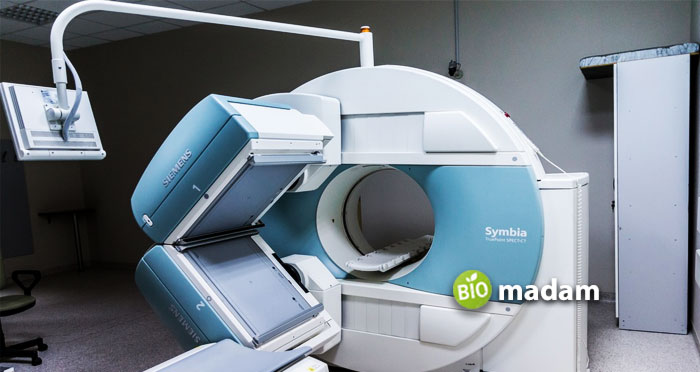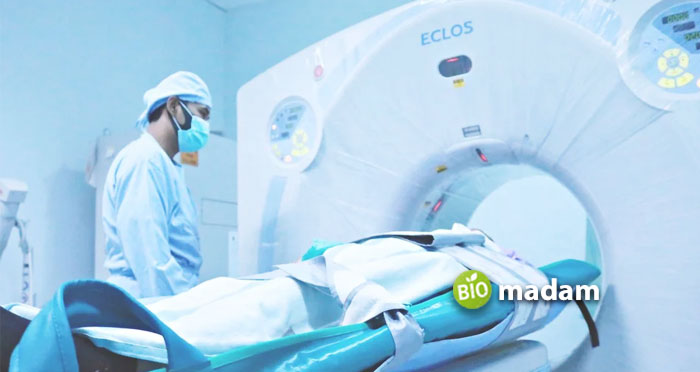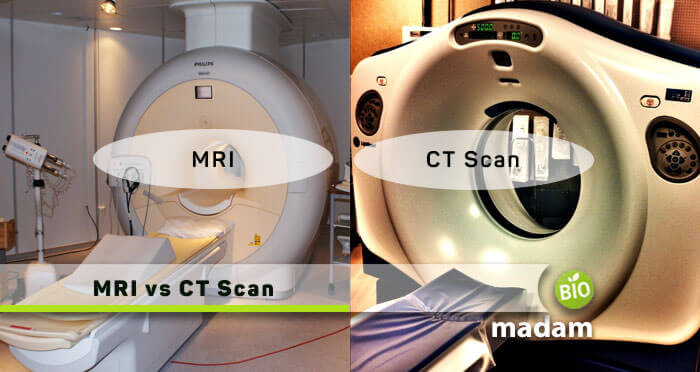Recently updated on October 5th, 2023 at 07:58 am
The world has been evolving rapidly, and so does technology. We wake up every day and hear new inventions and innovations that we couldn’t even think of—the same goes in the field of medicine. To save humans’ precious lives and make health investigations more quick and sound, testing and medicines are upgraded and invented regularly to discover an illness in its initial stages inside the body and not cause irreversible harm.

MRI and CT scans are also some inventions in medicine that have entirely altered the diagnosis. These are the innovative versions of x-ray and help in the complete internal examination of the body by providing every minute detail. You might be wondering if both are responsible for internal examination and providing a clear inner picture of the body, then how do these two tests differ? There are many differences between these two tests that we will explore in this article. But, first, let’s start with its comparison table.
Comparison Table
| Parameters | MRI | CT Scan |
|---|---|---|
| Rays | Radio Waves & Magnetic Fields | X-rays |
| Machine Structure | Closed like a death bed | Open Machine |
| Cost | Very Expensive | Less Expensive |
| Time | Requires Approx. 1 hour | Takes 15-20 minutes |
| Radiations | Exposes a patient to high radiations | Exposes a patient to low-intensity radiations |
| Detailing | Gives a more detailed picture of the body’s inside | Provides less clear images than MRI |
| Noise | Very Noisy | Produces Less Noise |
| Claustrophobia | Causes Anxiety | Does not cause any discomfort |
What is MRI?

Magnetic resonance imaging, commonly known as MRI, uses radio waves and magnetic fields to produce a detailed body image, for e.g., of the bones and tissues. It clearly lets us detect bone diseases like osteoarthritis and rheumatoid arthritis. The images produced in the MRI are layered on top of one another. These help doctors and radiologists understand what has been happening inside the body and its tissues.
Due to the in-depth images produced by MRI, this scan is ideal for examining the ankles, joints, breast, blood vessels, and organs such as kidneys, brain, heart, etc. besides being a good technology, this procedure is time-consuming, taking almost 1 hour at times. Anxiety patients might find this lengthy process a bit difficult. Moreover, claustrophobic patients feel uncomfortable due to suffocation and loud noises.
What is CT Scan?

A CT-Scan is a body scan by uses x-rays to produce images. The process is quick, less noisy, and painless and requires the patient to lie down on a bed, and the body will pass through a machine that will record pictures using x-rays. With the help of computer technology, 2D cross-sectional images or slices of the body area are being imaged. You might be wondering then why a CT scan is better than a normal x-ray, it’s because the 2D images, when stacked together, can create a 3D view for more detailed visualization of the body.
The machine takes pictures of the body from different angles in the CT scan. Hence, the scan is ideal for analyzing tumors, bone fractures, cancer, or finding any underlying internal bleeding.
Similarities between MRI and CT Scan
MRI and CT scans are although different technologies; there are still some similarities between the two mentioned below:
- The primary purpose of both tests is to analyze the body and examine any health-related issue internally.
- The tests help detect type of cancer and diagnose the cause in its earliest stages.
- The radiation used for getting the pictures can cause damaging effects on the body, and therefore these scans are strictly prohibited during pregnancy.
- For more visible results, the tests can be done by adding a contrast dye inside the patient’s body, which causes adverse effects, especially to the kidneys.
Differences between MRI and CT Scan
Primary Function
MRI
Magnetic resonance imaging, MRI, plays a primary role in detecting soft tissue problems, and alterations in tendons, ligaments, and the brain.
CT Scan
The CT scan helps explicitly detect trauma injuries, blood vessel clotting, and cancer.
Visual Results
MRI
The visual representation of bony structures is less detailed than the CT scan.
CT Scan
On the contrary, the imaging outcomes are more apparent than MRI.
Use of Radiation
MRI
Magnetic resonance imaging processes through strong magnetic fields.
CT Scan
On the other hand, this scanning requires low doses of radiation for processing.
Duration of Process
MRI
The process continues for up to a maximum of thirty minutes.
CT Scan
In contrast, this procedure is less time-consuming, only requiring five to ten minutes.
Type of Noise Produced
MRI
These machines usually produce loud noises, so to avoid any ear damage, you will get earplugs or headphones before processing.
CT Scan
In contrast, CT scanners effectively generate soft noises, so there is no harm as well.
Cost
MRI
The procedure is very expensive.
CT Scan
This process, on the other hand, is less expensive.
Limitations
MRI
People with sensitive medical histories or pregnant women cannot undergo MRIs.
CT Scan
On the contrary, CT scans have no side effects on patients with medical implantations. However, pregnant women still should avoid such procedures.
Which One to Choose; MRI or CT Scan?

MRI and CT scans both are equally important and successful in their respective domains. Still, at times people find the two tests indifferent as both have the primary purpose of examining the internal situation of the body.
However, the MRI and CT scan decision depends entirely upon the part of your body that your doctor eventually wants to examine. If your doctor wants to examine joints, tissues, or organs, he may ask you for an MRI, whereas if your doctor wants to investigate any internal injury or a fracture, you will be asked for a CT scan.
Conclusion
MRI and CT scans are some of the most valuable innovations in medicine. The tests are vital to diagnosing and curing high-risk illnesses at early stages with accuracy. The tests have a lot of differences and similarities and are usually performed when routine x-rays, ultrasounds, and other tests are not helping in diagnosis.

Anna has completed her degree in Pharmacy from the University of Hawaii. She is serving as a research assistant in a pharmaceutical company. She had a great interest in writing blogs, traveling to different parts of the US, and trying delicious recipes in her spare time.

